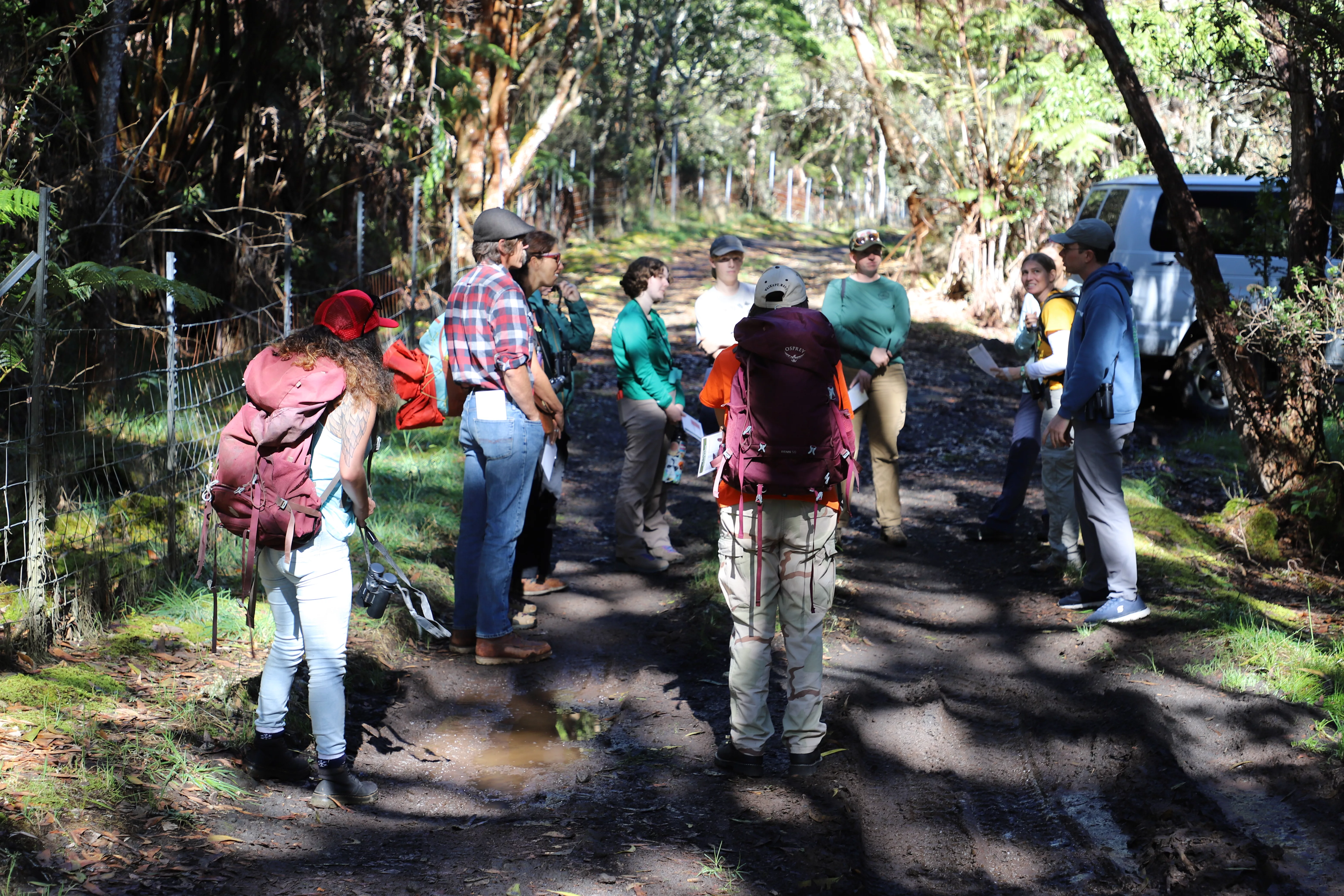More than a dozen volunteers recently joined DLNR Division of Forestry and Wildlife (DOFAW) staff to count birds.
Christmas bird counts began as a holiday tradition, before the turn of the 20th century, when hunters engaged in what was known as the Christmas Side Hunt.
In 1900, with bird populations declining, the Audubon Society introduced annual bird surveys, later renamed Christmas Bird Counts, which annually have more than 1,000 count locations across the globe.
The count took two spotting teams into perhaps the richest native forest bird habitat anywhere in Hawai‘i. So far, the NAR has remained free of avian malaria, which is causing the extinction of some species of native birds, particularly those in the Honeycreeper family.
After four hours of counting, the teams tallied 199 individuals of the endangered or threatened forest bird species. The volunteers also helped set and replenish traps which help keep predators like rats, cats, and mongoose away from the birds.
The data collected by observers over the past century allows researchers, conservation biologists, wildlife agencies and other interested individuals to study the long-term health and status of bird populations across North America. When combined with other surveys, it provides a picture of how the continent’s bird populations have changed in time and space over the past 125 years. The long-term perspective is vital for conservationists. It informs strategies to protect birds and their habitat and helps identify environmental issues with implications for people as well.
Photo credit: DLNR





